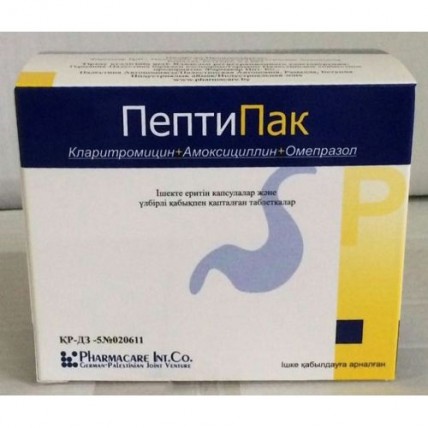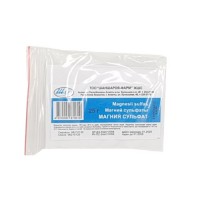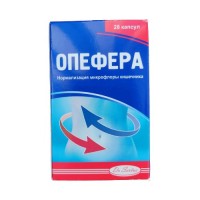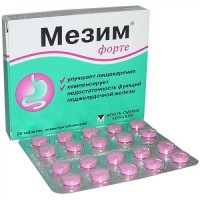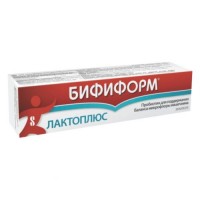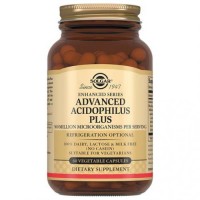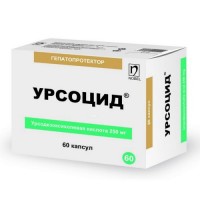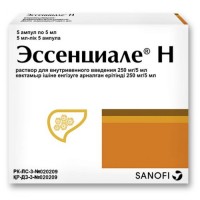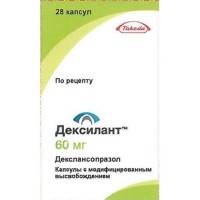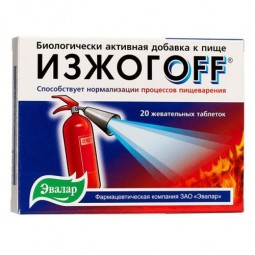Peptipak 42's capsules and tablets p.p.o.
- $72.40
Sku:
efe6cbb5eef7
Instruction for medical use of PEPTIPAK medicine Trade name Peptipak Mezhdunarodnoye unlicensed name: there is no Dosage form of the Capsule kishechnorastvorimy and tablets, film coated kishechnorastvorimy Omeprazolum 1 capsule kishechnorastvorimy contains Structure of the Capsule: Active agent: omeprazolum of 20.0 mg, excipients: hydroksipropilmetiltsellyuloz (GPMC), hydroksipropilmetiltsellyuloz phthalate (GPMC phthalate), dinatrium hydrophosphate, diethyl phthalate, lactose anhydrous, sodium lauryl sulfate, hydroxypropyl cellulose, structure of the body and lid of capsules: indigo carmine (E 132), titan dioxide (E 171), gelatin, inert kernel: sucrose, starch corn, glucose. Amoxicillin tablets, a film coated 1 tablet, film coated contains: Active agent: amoxicillin of 1000 mg (amoxicillin in the form of trihydrate), excipients: silicon dioxide colloidal, krospovidon, magnesium stearate, sodium starch is glikolit, povidone, a tablet cover: opadray white. Klaritromitsin's tablets, a film coated 1 tablet, film coated contains: Active agent: klaritromitsin 500.0 mg, excipients: silicon dioxide colloidal, the talc purified of magnesium stearate, sodium starch is glikolit, povidone - K29-32, cellulose microcrystalline, starch 1500, water purified a tablet cover: tartrazine (E 102), opadray. The description of the Capsule kishechnorastvorimy solid, gelatin capsules of Omeprazolum with the body of white color and a lid of blue color 2 of No. in size, with the Capsule Contents logo - the microgranules of white or almost white color of the Tablet of Amoxicillin, film coated tablets of an oval form film coated with an uneven surface of the Tablet of Klaritromitsin, film coated tablets of an oval form, film coated light yellow color Pharmacotherapeutic group: Drugs for treatment of the diseases connected with disturbance of acidity. Antiulcerous drugs and drugs for a gastroezofagalny reflux. Combinations of drugs for Helicobacter pylori eradikation. The ATX A02BD05 code the Pharmacological Pharmacokinetics Pharmacokinetics properties of three Peptipaka components (Omeprazolum in capsules kishechnorastvorimy, Amoxicillin in tablets, film coated and Klaritromitsina in tablets, film coated) at a concomitant use separately it was not studied. In researches it is not established clinically significant interaction of Omeprazolum and Amoxicillin, or Omeprazolum and Klaritromitsin at their combined use, except for possible increase in serumal concentration of omeprazolum and a klaritromitsin at simultaneous use what is considered as positive effect in relation to efficiency of triple eradikatsionny therapy. The system pharmacokinetic information given below is based on pharmacokinetic data of each drug at reception in the form of monotherapy. Amoxicillin is steady in the presence of hydrochloric acid, at intake quickly and well (75-90%) is soaked up, distributed in fabrics and liquids of an organism. At reception of tablets in a dose of 1000 mg the maximum concentration in blood is reached in 1-2 hours. Linking with proteins of blood plasma makes about 20%. Amoxicillin easily passes gistogematichesky barriers, except GEB, quickly gets and collects in therapeutic concentration in the majority of fabrics and liquids of an organism, including a mucous membrane of a GIT. Elimination half-life makes 1 - 1.5 hour. The most part of amoxicillin (50-70%) is removed by kidneys in an invariable look by canalicular secretion (80%) and glomerular filtration (20%) for the period about 6-8 hours. 10-20% of the accepted dose of amoxicillin are removed by a liver. After intake is defined in serum for 8 hours. In a renal failure the elimination half-life is extended till 4-12.6 o'clock. Klaritromitsin is quickly soaked up from a GIT, the bioavailability at healthy volunteers is about 50%. Food slows down absorption of a klaritromitsin, significantly without affecting bioavailability. Tmaks. at reception on an empty stomach makes 2-3 hours. Extent of linking with proteins of blood plasma reaches 70% at the level of plasma concentration of 0.45-4.5 mkg/ml (at increase in concentration possibly decrease in extent of binding). About 20% of the accepted dose are metabolized in a liver with formation of an active metabolite 14-OH klaritromitsin. The pharmacokinetics of a klaritromitsin is not linear. At reception in a dose of 500 mg each 12 hours Smaks. makes 2-3 mkg/l for a klaritromitsin and up to 1 mkg/ml for 14-OH klaritromitsin. Klaritromitsin and 14-OH klaritromitsin well get into liquids and fabrics, creating concentration to 10 times exceeding level in blood serum. The volume of distribution is 243-266 l. T1/2 at reception of a klaritromitsin in a dose of 500 mg each 12 hours - 5-7 hours for a klaritromitsin and 7-9 for its metabolite. 20-30% of the accepted dose of a klaritromitsin are removed in an invariable view with urine, about 4% are excreted with excrements. Omeprazolum is soaked up in a small intestine, absorption happens within 3-6 hours. The bioavailability of omeprazolum after single dose is 35%, after regular everyday reception increases up to 60%. Distribution volume at healthy volunteers is about 0.3 l/kg, at elderly patients and patients with a renal failure this value is slightly lower. About 95% of omeprazolum contact proteins of blood plasma. Elimination half-life of T1/2 of omeprazolum from blood averages 1 hour, at prolonged use this indicator does not change. Omeprazolum is completely metabolized by the system of oksidazny cytochromes and, generally in a liver. Metabolism of omeprazolum depends on a specific isoform of CYP2C19 cytochrome, after hydroxylation which forms the hydroxyomeprazolum which is the main metabolite. About 80% of the appointed dose are removed with urine in the form of metabolites, the insignificant quantity is removed by bile with excrements. The pharmacodynamics is Peptipaka Active ingredients a combination of inhibitor of the proton pump of omeprazolum and two antibacterial agents of a klaritromitsin and amoxicillin, having bactericidal effect concerning Helicobacter pylori. Helicobacter pylori in most cases plays a crucial role in development of stomach ulcer and a duodenum in this connection its eradikation allows to prevent a disease recurrence. The mechanism of anti-secretory effect of omeprazolum is connected with inhibition (suppression of activity) of H+/K enzyme +-ATFazy (the enzyme accelerating exchange of ions of hydrogen) in cell membranes mucous a stomach that leads to blocking of a final mode of formation of hydrochloric acid, reduces rn a stomach and promotes healing of an ulcer. Omeprazolum suppresses growth of Helicobacter pylori and provides favorable conditions for antimicrobic action. The mechanism of antimicrobic effect of amoxicillin is connected with inhibition of transpeptidase and disturbance of synthesis of a peptidoglikan (structural mukopeptid a cell wall of bacteria, providing its durability) during division and growth of a cell that causes lysis of microorganisms. The mechanism of antimicrobic action of a klaritromitsin is caused by ability to contact 50S a ribosome subunit of a microbic cell and to suppress protein synthesis. Monotherapy by any of antibiotics is less effective and can lead ment of drug resistance of a microorganism while the combination of two antibiotics (amoxicillin and a klaritromitsin) increases efficiency of eradikatsionny therapy in the presence of inhibitor of a proton pomp practically to 100%. H+, K inhibitors +-ATFaza strengthen action of antibiotics which activity depends from rn (amoxicillin and a klaritromitsin). Indications - Helibacter pylori eradikation in a peptic ulcer of a stomach and duodenum and also, in case of exacerbation of the chronic gastritis associated with H. pylori. Route of administration and doses Before beginning treatment by Peptipak, it is necessary to make an endoscopic biopsy or a serology to find out presence of an infection of H. pylori. Peptipak's use, provides optimum doses of Omeprazolum, Amoxicillin and Klaritromitsin for Helicobacter pylori eradikation. About 20 mg of Omeprazolum (1 capsule), 1 g of Amoxicillin (1 tablet) and 500 mg of Klaritromitsin (1 tablet) twice a day – in the morning and in the evening, before meal are recommended to accept. A course of treatment – 7-14 days. Tablets and the capsule should not be opened, chewed, or to break, it is necessary to swallow of them entirely. Daily dose: for Omeprazolum of 40 mg, for Amoxicillin of 2 g, for Klaritromitsin of 1 g. Peptipak is not recommended to patients with renal failures (clearance of creatinine less than 30 ml/min.). Patients with abnormal liver functions Peptipak should appoint with care, reduction of a dose or increase in an interval between administrations of drug is possible. Side effect At a concomitant use of all three components of drug: most often: diarrhea, a headache, a perversion of flavoring feelings, - from digestive system: coloring of a chair in dark color, dryness in mouth/thirst, an abdominal pain, a glossitis, a rectal itching, nausea, candidiasis of a mucous membrane of an oral cavity, stomatitis, discoloration of language, vomiting, - from the musculoskeletal system: myalgia, - from nervous system: confusion of consciousness, dizziness, - from respiratory organs: respiratory disturbances, - from skin: skin reactions, - from an urinogenital system: vaginitis, vaginal candidiasis. Omeprazolum: - reaction of hypersensitivity (urticaria, an anaphylaxis, an acute anaphylaxis, angioneurotic swelled, a bronchospasm), - fatigue, an indisposition, fever, - a stethalgia or stenocardia, tachycardia, bradycardia, trembling, the increased arterial blood pressure, peripheral hypostases, - dryness in a mouth, a language mucosal atrophy, stomatitis, anorexia, pancreatitis, irritation of intestines, decolouration a calla, - liver diseases, a liver failure, hepatic encephalopathy, a hepatocellular carcinoma, cholestatic hepatitis, jaundice, increase in enzymes of a liver (ALT, AST, GGT, alkaline phosphatase, bilirubin), - a hypoglycemia, a hyponatremia, - increase in weight, - muscle weakness, myalgia, muscular spasms, the general pains, a sore throat, - nasal bleeding, - a ring in ears, a food faddism, - a gynecomastia, - atrophic gastritis, - a sleep disorder, a depression, excitement, aggression, hallucinations, insomnia, neurosis, apathy, drowsiness, concern, paresthesia, - heavy generalized skin reactions (toxic epidermal necrolysis, Stephens-Johnson's syndrome, a multiformny erythema, a photodermatitis, a small tortoiseshell, rash, an itching, petechias, a purpura, baldness, xeroderma, a hyperhidrosis), - an atrophy of an optic nerve, the previous ischemic neuropathy of an optic nerve, an optic neuritis, a xerophthalmus syndrome, irritation of eyes, a veil before eyes, doubling in eyes, - interstitial nephrite, a hamaturia, a proteinuria, increase in creatinine of serum, a pyuria, urinary tract infection, a glucosuria, frequent urination, pain in testicles, - an agranulocytosis, hemolytic anemia, a pancytopenia, a neutropenia, anemia, thrombocytopenia, a leukopenia, a leukocytosis. Amoxicillin: - nausea, vomiting, diarrhea, hemorrhagic/pseudomembranous colitis, - an anaphylaxis, a serum disease, erythematic makulopapulezny rash, a multiformny erythema, Stephens-Johnson's syndrome, exfoliative dermatitis, a toxic epidermal necrolysis, sharp exanthematous pustullez, a vasculitis, urticaria, - increase in nuclear heating plant, ALT, cholestatic jaundice, a hepatic cholestasia, acute cytolytic hepatitis, - candidiasis, a crystalluria, - anemia, including hemolytic anemia, thrombocytopenia, a Werlhof's disease, an eosinophilia, a leukopenia, an agranulocytosis, - reversible hyperactivity, arousing, concern, insomnia, confusion of consciousness, a spasm, change of behavior, dizziness, - change of coloring of teeth (brown, yellow or gray coloring) which takes place after their cleaning. Klaritromitsin: - allergic reactions (urticaria, an anaphylaxis, Stephens-Johnson's syndrome, a toxic epidermal necrolysis), - an arthralgia, myalgia, - a glossitis, stomatitis, anorexia, vomiting, decolouration of language, change of coloring of teeth, pancreatitis, hepatocellular, cholestatic hepatitis with jaundice or without jaundice, - dizziness, concern, behavioural changes, confusion of consciousness, convulsion, depersonalization, a disorientation, hallucinations, insomnia, "dreadful" dreams, paresthesia, psychosis, a ring in ears, change of sense of smell, a food faddism or loss of taste, - lengthening of an interval of QT, ventricular arrhythmia, including ventricular tachycardia, - pseudomembranous colitis, - interstitial nephrite, - kolkhitsinovy intoxication, - thrombocytopenia, a leukopenia, a neutropenia, increase in enzymes of a liver, a hypoglycemia, increase in a prothrombin time, high serumal creatinine. Contraindications - hypersensitivity in the anamnesis to a beta laktamnym to antibiotics, a klaritromitsin, erythromycin and other antibiotics of group of macroleads, omeprazolum, - an infectious mononucleosis, - the profound renal failures (clearance of creatinine less than 30 ml/min.), - cardiovascular disturbances in the anamnesis (arrhythmia, bradycardia, lengthening of an interval QT, coronary heart disease, heart failure, piruetny ventricular tachycardia (torsade de pointes)), - the profound abnormal liver functions, - joint intake of omeprazolum with atazanaviry - sharing of a klaritromitsin with ergotamine or dihydroergotamine (the ergotaminovy intoxication which is shown an angiospasm, ischemia of extremities and other bodies including the central nervous system) - the period of pregnancy and a lactation, - children's age up to 18 years, - a concomitant use of a terfenadin, Pimozidum, an astemizol, a tsizaprid (risk of lengthening of an interval of QT, cardiac arrhythmia, including ventricular tachycardia, fibrillation of ventricles, bidirectional ventricular tachycardia), - a concomitant use of a triazolam - a concomitant use of a lovastatin, a simvastatin (risk of development of a myopathy can develop, including rabdomilioz), - a concomitant use of derivatives of an ergot, - limfomikoz Medicinal interactions Chloramphenicol, streptocides, linkozamida and tetracyclines (bacteriostatic antibiotics) can interfere with bactericidal effect of amoxicillin. The estrogen-containing oral contraceptive drugs: influence of antibiotics on intestinal microflora can lead to decrease in a reabsorption of estrogen and decrease in efficiency of the combined contraceptive drugs. Methotrexate: amoxicillin reduces clearance and increases toxicity of a methotrexate. Indirect anticoagulants: increase in efficiency of indirect anticoagulants in view of suppression of intestinal microflora, decrease in synthesis of vitamin K and the prothrombin ratio is possible. NPVS, diuretics, Allopyrinolum, probenitsid and other HP suppressing canalicular secretion: at a concomitant use with amoxicillin the increase in serumal concentration of amoxicillin and increase in elimination half-life is possible. Antacids and enterosorbents (the coal activated, white clay, etc.): decrease in absorption of amoxicillin at a concomitant use is possible. The interval between reception has to make not less than 2 hours. The medicines which are metabolized with participation of enzymes of P 450 cytochrome (tsilostazol, Methylprednisolonum, warfarin, sildenafit, ergot derivatives, to alprozola, triazoles, midazolam, rifabutin, tsilosporin, vinblastine, Valproatums): increase in serumal concentration and also pharmacological and toxic effects of these medicines at a concomitant use is possible with klaritromitsiny. Monitoring of serumal concentration is recommended. Atazonavir: omeprazolum at simultaneous uses significantly reduces AUC and plasma concentration of an atazonavir. It is necessary to exclude simultaneous use. Warfarin and other indirect anticoagulants: klaritromitsin and omeprazolum at simultaneous use promote increase in plasma concentration of warfarin that can lead to hemorrhagic complications and strengthening of side effects. Control INR (The International Normalized Relation) of plasma and, perhaps, decrease in doses of anticoagulants is recommended. Digoxin: Klaritromitsin and omeprazolum can increase concentration
of digoxin and, respectively, pharmakodinamichesky and toxic effects of digoxin. In post-marketing observations it was reported that at some patients symptoms of digoksinovy intoxication were noted (including potentially lethal arrhythmias). Monitoring of serumal concentration of digoxin is recommended. GMG-KoA-reduktazy inhibitors (simvastatin, lovastatin, etc.): the concomitant use with klaritromitsiny leads to increase in serumal concentration of statines and risk of development of side reactions. It was reported about several cases of a rhabdomyolysis (acute necrosis of muscles with the subsequent renal failure) against the background of a concomitant use of a klaritromitsin and statines. Carbamazepine: klaritromitsin can strengthen pharmacological and toxic effects of carbamazepine in view of decrease in its excretion. It is necessary to control carbamazepine level in blood. Colchicine: colchicine is CYP3A4 substrate and the R-glycoprotein which inhibits klaritromitsin. At joint prescribing of colchicine and a klaritromitsin, the inhibition of the R-glycoprotein and/or CYP3A can lead to strengthening of effect of colchicine. Control of a condition of patients concerning clinical symptoms of kolkhitsinovy toxicity at co-administration of drugs is required. Oral anticoagulants: spontaneous messages during the post-marketing period assume that simultaneous introduction of a klaritromitsin and oral anticoagulants can exponentiate effects of the last. It is necessary to control carefully a prothrombin time if patients at the same time accept klaritromitsin and oral anticoagulants. Antifungal means (ketokonazol, itrakonazol): omeprazolum can reduce absorption of antifungal means. Co-administration with vorikonazoly, leads to mutual increase in plasma concentration of both drugs. Ergot derivatives: co-administration can lead ment of acute ergotaminovy toxicity, the shown vasospasm and ischemia of tissues of extremities and also toxic manifestations from central nervous system. Sharing of a klaritromitsin with ergotamine or dihydroergotamine is contraindicated. Ritonavir: at simultaneous use the increase in serumal concentration of a klaritromitsin is possible. Doses of a klaritromitsin higher than 1 g/day should not be appointed along with ritonaviry. The patients with a renal failure who are at the same time accepting klaritromitsin and ritonavir need dose adjustment of a klaritromitsin. For patients with clearance of creatinine (CLCR) from 30 to 60 ml/min. the dose of a klaritromitsin has to be reduced by 50%. Takrolimus: increase in serumal concentration of a takrolimus at a concomitant use with klaritromitsiny and omeprazolum. It is necessary to carry out constant control of concentration of a takrolimus. Theophylline: the concomitant use with klaritromitsiny increases serumal concentration of theophylline and risk of development of toxic effects. At the patients receiving high doses of theophylline or with concentration in the upper therapeutic range it is necessary to carry out constant control of concentration of theophylline. Terfenadin: simultaneous use of a klaritromitsin and terfenadin increases concentration of the last in blood plasma. It can lead to lengthening of an interval of QT and disturbance of a heart rhythm. Contraindicated combined use of a klaritromitsin with terfenadiny. To triazoles: simultaneous use of a klaritromitsin and triazolam increases concentration of the last in blood plasma. In the postmarkentigovy period it was reported that at some patients side effects from central nervous system were noted (drowsiness, confusion of consciousness). It is necessary to kontorlirovat the level of a triazolam in blood Phenytoinum: increase in plasma concentration of Phenytoinum at a concomitant use with klaritromitsiny and omeprazolum (Phenytoinum dose decline can be required). Quinidine, Disopyramidum: increase in serumal concentration of antiarrhythmic drugs and risk of development of torsade de pointes at simultaneous use is possible, monitoring of serumal concentration is required. Erythromycin: When using erythromycin and a klaritromitsin at the patients who are at the same time taking the drugs, metaboliziruyemy the system of P450 cytochrome the increase in levels of these drugs in serum can be noted. It is necessary to control carefully concentration in serum of drugs, the metabolized CYP3A, at the patients who are at the same time receiving klaritromitsin or erythromycin. Special instructions the General: when performing antibacterial therapy it is necessary to remember a possibility of development of superinfections of the fungal and bacterial nature. At development of superinfections it is necessary to cancel Peptipak and to appoint the corresponding pathogenetic therapy. At suspicion of stomach ulcer it is necessary to exclude possible presence of a malignant disease as omeprazolum as a part of Peptipak can eliminate symptomatology of a malignant new growth before prescribing of drug and delay production of the correct diagnosis. Patients with a mononucleosis have a high risk of developing erythematic skin rash against the background of intake of amoxicillin, in this regard Peptipak is contraindicated at patients with a mononucleosis. Patients with a rare form of congenital intolerance of fructose, glyukozo-galaktozny malabsorption or saccharose izomaltaznoy insufficiency should not take this drug. Due to availability of messages about exceptional cases of development of kolkhitsinovy toxicity at a concomitant use of a klaritromitsin and colchicine, in particular at elderly patients with renal failures (there were messages about several cases of death), it is necessary to control a condition of patients at co-administration of drugs. Use for patients of advanced age: as at elderly patients the renal failure meets more often, and the risk of toxic reactions increases at disturbance of renal function, it is necessary to be careful when assigning to patients with a renal failure. At clearance of creatinine less than 30 ml/min. Peptipak is contraindicated. Reactions of hypersensitivity (anaphylactic reactions). At prescription of antibiotics of group of penicillin can develop serious, in certain cases up to lethal outcomes, reaction of hypersensitivity (anaphylactic reactions). Though more often anaphylactic reactions develop against the background of parenteral therapy, they can be provoked also by intake of oral penicillin. Risk of development of these reactions is higher at patients with reactions of hypersensitivity to penicillinic antibiotics in the anamnesis or having hypersensitivity to multiple allergens. There are messages about cases of development of heavy reactions of hypersensitivity when prescribing cephalosporins to the patients having allergic reactions to penicillinic antibiotics in the anamnesis. Before Peptipak's appointment it is necessary to collect and estimate carefully information on the possible previous allergic reactions of the patient to intake of penicillin, cephalosporins and also makrolidny antibiotics (a klaritromitsin, erythromycin and others). At development of allergic reactions, it is necessary to stop immediately Peptipak's reception and to take measures for stopping of allergic reaction. Serious anaphylactic reactions are stopped by administration of adrenaline, intravenous glucocorticosteroids and if necessary, to a breath possibility, including an intubation. Pseudomembranous colitis. At intake practically of all antibacterial drugs, including amoxicillin, development of the pseudomembranous colitis varying on severity from an easy form to zhizneugrozhayushchy states is possible. In this regard follows in case of development of diarrhea against the background of intake of antibacterial drugs to estimate the patient's condition in terms of possible risk of developing pseudomembranous colitis. Intake of antibacterial drugs changes a condition of normal flora of intestines that can promote the excess growth of clostridiums. By researches it was shown that the toxin produced by Clostridium difficile is the development prime cause an antibiotic - the associated colitis. At diagnosis of pseudomembranous colitis the appropriate therapeutic measures are taken. At an easy form of a disease in most cases it is enough to cancel antibacterial drug. At a moderate and heavy course of superinfection, it is necessary to consider need of prescribing of liquid and the electrolytes, amino-acid food and antibiotics which showed the efficiency in the colitis caused by Clostridium difficile. Use during pregnancy and a lactation Peptipak's Use during pregnancy and feeding by a breast is not recommended. Features of influence on ability to run the vehicle or potentially dangerous mechanisms negative influence of Peptipak and his components separately on ability to driving of the road transport and work with dangerous devices and mechanisms is not revealed. Overdose Symptoms: At overdose by Omeprazolum – nausea, vomiting, dizziness, an abdominal pain, diarrhea, a headache, in isolated cases: apathy, depression and concern (passing symptoms). At overdose by Amoxicillin – nausea, vomiting, diarrhea, an amoksitsillinovy crystalluria (in certain cases - a renal failure). At overdose by Klaritromitsin – allergic reactions and gastrointestinal symptoms. It was reported about 1 case of reception of a klaritromitsin in a dose of 8 g (at the patient the bipolar disorder of sight was noted). Change of the mental status, paranoid behavior, a hypopotassemia and an anoxemia was noted. Treatment: gastric lavage, symptomatic therapy. At overdose, Amoxicillin in addition showed correction of water and electrolytic balance, for reduction of an amoksitsillinovy crystalluria, adequate completion of liquid, if necessary, carrying out a hemodialysis. It is necessary to consider that at overdose by Klaritromitsin the hemodialysis and peritoneal dialysis are inefficient, and at overdose by Omeprazolum there is no specific antidote. The form of release and packing On 2 capsules of omeprazolum and 2 tablets of amoxicillin and 2 tablets of a klaritromitsin in blister strip packaging, on 7 blister strip packagings in a cardboard pack together with the instruction for medical use in the state and Russian languages to Store Storage conditions in the dry, protected from light place, at a temperature not above 25 °C. 2 years not to use a period of storage after the expiry date specified on packing. Prescription status According to the prescription the Producer Pharmakar of PLS, Palestinian Authority Ramallah, Betuniya of the item ya 667 Owner of the Registration Certificate Germano - the Palestinian Joint venture Pharmakar Int. To., Palestinian Authority Ramallah, Betuniya, the Industrial zone of Ph.: + 97222900682 The address of the organization accepting in the territory of the Republic of Kazakhstan claims from consumers on quality of products: El company LLP, Almaty, Masangchi St. 98 A, office 41
of digoxin and, respectively, pharmakodinamichesky and toxic effects of digoxin. In post-marketing observations it was reported that at some patients symptoms of digoksinovy intoxication were noted (including potentially lethal arrhythmias). Monitoring of serumal concentration of digoxin is recommended. GMG-KoA-reduktazy inhibitors (simvastatin, lovastatin, etc.): the concomitant use with klaritromitsiny leads to increase in serumal concentration of statines and risk of development of side reactions. It was reported about several cases of a rhabdomyolysis (acute necrosis of muscles with the subsequent renal failure) against the background of a concomitant use of a klaritromitsin and statines. Carbamazepine: klaritromitsin can strengthen pharmacological and toxic effects of carbamazepine in view of decrease in its excretion. It is necessary to control carbamazepine level in blood. Colchicine: colchicine is CYP3A4 substrate and the R-glycoprotein which inhibits klaritromitsin. At joint prescribing of colchicine and a klaritromitsin, the inhibition of the R-glycoprotein and/or CYP3A can lead to strengthening of effect of colchicine. Control of a condition of patients concerning clinical symptoms of kolkhitsinovy toxicity at co-administration of drugs is required. Oral anticoagulants: spontaneous messages during the post-marketing period assume that simultaneous introduction of a klaritromitsin and oral anticoagulants can exponentiate effects of the last. It is necessary to control carefully a prothrombin time if patients at the same time accept klaritromitsin and oral anticoagulants. Antifungal means (ketokonazol, itrakonazol): omeprazolum can reduce absorption of antifungal means. Co-administration with vorikonazoly, leads to mutual increase in plasma concentration of both drugs. Ergot derivatives: co-administration can lead ment of acute ergotaminovy toxicity, the shown vasospasm and ischemia of tissues of extremities and also toxic manifestations from central nervous system. Sharing of a klaritromitsin with ergotamine or dihydroergotamine is contraindicated. Ritonavir: at simultaneous use the increase in serumal concentration of a klaritromitsin is possible. Doses of a klaritromitsin higher than 1 g/day should not be appointed along with ritonaviry. The patients with a renal failure who are at the same time accepting klaritromitsin and ritonavir need dose adjustment of a klaritromitsin. For patients with clearance of creatinine (CLCR) from 30 to 60 ml/min. the dose of a klaritromitsin has to be reduced by 50%. Takrolimus: increase in serumal concentration of a takrolimus at a concomitant use with klaritromitsiny and omeprazolum. It is necessary to carry out constant control of concentration of a takrolimus. Theophylline: the concomitant use with klaritromitsiny increases serumal concentration of theophylline and risk of development of toxic effects. At the patients receiving high doses of theophylline or with concentration in the upper therapeutic range it is necessary to carry out constant control of concentration of theophylline. Terfenadin: simultaneous use of a klaritromitsin and terfenadin increases concentration of the last in blood plasma. It can lead to lengthening of an interval of QT and disturbance of a heart rhythm. Contraindicated combined use of a klaritromitsin with terfenadiny. To triazoles: simultaneous use of a klaritromitsin and triazolam increases concentration of the last in blood plasma. In the postmarkentigovy period it was reported that at some patients side effects from central nervous system were noted (drowsiness, confusion of consciousness). It is necessary to kontorlirovat the level of a triazolam in blood Phenytoinum: increase in plasma concentration of Phenytoinum at a concomitant use with klaritromitsiny and omeprazolum (Phenytoinum dose decline can be required). Quinidine, Disopyramidum: increase in serumal concentration of antiarrhythmic drugs and risk of development of torsade de pointes at simultaneous use is possible, monitoring of serumal concentration is required. Erythromycin: When using erythromycin and a klaritromitsin at the patients who are at the same time taking the drugs, metaboliziruyemy the system of P450 cytochrome the increase in levels of these drugs in serum can be noted. It is necessary to control carefully concentration in serum of drugs, the metabolized CYP3A, at the patients who are at the same time receiving klaritromitsin or erythromycin. Special instructions the General: when performing antibacterial therapy it is necessary to remember a possibility of development of superinfections of the fungal and bacterial nature. At development of superinfections it is necessary to cancel Peptipak and to appoint the corresponding pathogenetic therapy. At suspicion of stomach ulcer it is necessary to exclude possible presence of a malignant disease as omeprazolum as a part of Peptipak can eliminate symptomatology of a malignant new growth before prescribing of drug and delay production of the correct diagnosis. Patients with a mononucleosis have a high risk of developing erythematic skin rash against the background of intake of amoxicillin, in this regard Peptipak is contraindicated at patients with a mononucleosis. Patients with a rare form of congenital intolerance of fructose, glyukozo-galaktozny malabsorption or saccharose izomaltaznoy insufficiency should not take this drug. Due to availability of messages about exceptional cases of development of kolkhitsinovy toxicity at a concomitant use of a klaritromitsin and colchicine, in particular at elderly patients with renal failures (there were messages about several cases of death), it is necessary to control a condition of patients at co-administration of drugs. Use for patients of advanced age: as at elderly patients the renal failure meets more often, and the risk of toxic reactions increases at disturbance of renal function, it is necessary to be careful when assigning to patients with a renal failure. At clearance of creatinine less than 30 ml/min. Peptipak is contraindicated. Reactions of hypersensitivity (anaphylactic reactions). At prescription of antibiotics of group of penicillin can develop serious, in certain cases up to lethal outcomes, reaction of hypersensitivity (anaphylactic reactions). Though more often anaphylactic reactions develop against the background of parenteral therapy, they can be provoked also by intake of oral penicillin. Risk of development of these reactions is higher at patients with reactions of hypersensitivity to penicillinic antibiotics in the anamnesis or having hypersensitivity to multiple allergens. There are messages about cases of development of heavy reactions of hypersensitivity when prescribing cephalosporins to the patients having allergic reactions to penicillinic antibiotics in the anamnesis. Before Peptipak's appointment it is necessary to collect and estimate carefully information on the possible previous allergic reactions of the patient to intake of penicillin, cephalosporins and also makrolidny antibiotics (a klaritromitsin, erythromycin and others). At development of allergic reactions, it is necessary to stop immediately Peptipak's reception and to take measures for stopping of allergic reaction. Serious anaphylactic reactions are stopped by administration of adrenaline, intravenous glucocorticosteroids and if necessary, to a breath possibility, including an intubation. Pseudomembranous colitis. At intake practically of all antibacterial drugs, including amoxicillin, development of the pseudomembranous colitis varying on severity from an easy form to zhizneugrozhayushchy states is possible. In this regard follows in case of development of diarrhea against the background of intake of antibacterial drugs to estimate the patient's condition in terms of possible risk of developing pseudomembranous colitis. Intake of antibacterial drugs changes a condition of normal flora of intestines that can promote the excess growth of clostridiums. By researches it was shown that the toxin produced by Clostridium difficile is the development prime cause an antibiotic - the associated colitis. At diagnosis of pseudomembranous colitis the appropriate therapeutic measures are taken. At an easy form of a disease in most cases it is enough to cancel antibacterial drug. At a moderate and heavy course of superinfection, it is necessary to consider need of prescribing of liquid and the electrolytes, amino-acid food and antibiotics which showed the efficiency in the colitis caused by Clostridium difficile. Use during pregnancy and a lactation Peptipak's Use during pregnancy and feeding by a breast is not recommended. Features of influence on ability to run the vehicle or potentially dangerous mechanisms negative influence of Peptipak and his components separately on ability to driving of the road transport and work with dangerous devices and mechanisms is not revealed. Overdose Symptoms: At overdose by Omeprazolum – nausea, vomiting, dizziness, an abdominal pain, diarrhea, a headache, in isolated cases: apathy, depression and concern (passing symptoms). At overdose by Amoxicillin – nausea, vomiting, diarrhea, an amoksitsillinovy crystalluria (in certain cases - a renal failure). At overdose by Klaritromitsin – allergic reactions and gastrointestinal symptoms. It was reported about 1 case of reception of a klaritromitsin in a dose of 8 g (at the patient the bipolar disorder of sight was noted). Change of the mental status, paranoid behavior, a hypopotassemia and an anoxemia was noted. Treatment: gastric lavage, symptomatic therapy. At overdose, Amoxicillin in addition showed correction of water and electrolytic balance, for reduction of an amoksitsillinovy crystalluria, adequate completion of liquid, if necessary, carrying out a hemodialysis. It is necessary to consider that at overdose by Klaritromitsin the hemodialysis and peritoneal dialysis are inefficient, and at overdose by Omeprazolum there is no specific antidote. The form of release and packing On 2 capsules of omeprazolum and 2 tablets of amoxicillin and 2 tablets of a klaritromitsin in blister strip packaging, on 7 blister strip packagings in a cardboard pack together with the instruction for medical use in the state and Russian languages to Store Storage conditions in the dry, protected from light place, at a temperature not above 25 °C. 2 years not to use a period of storage after the expiry date specified on packing. Prescription status According to the prescription the Producer Pharmakar of PLS, Palestinian Authority Ramallah, Betuniya of the item ya 667 Owner of the Registration Certificate Germano - the Palestinian Joint venture Pharmakar Int. To., Palestinian Authority Ramallah, Betuniya, the Industrial zone of Ph.: + 97222900682 The address of the organization accepting in the territory of the Republic of Kazakhstan claims from consumers on quality of products: El company LLP, Almaty, Masangchi St. 98 A, office 41
